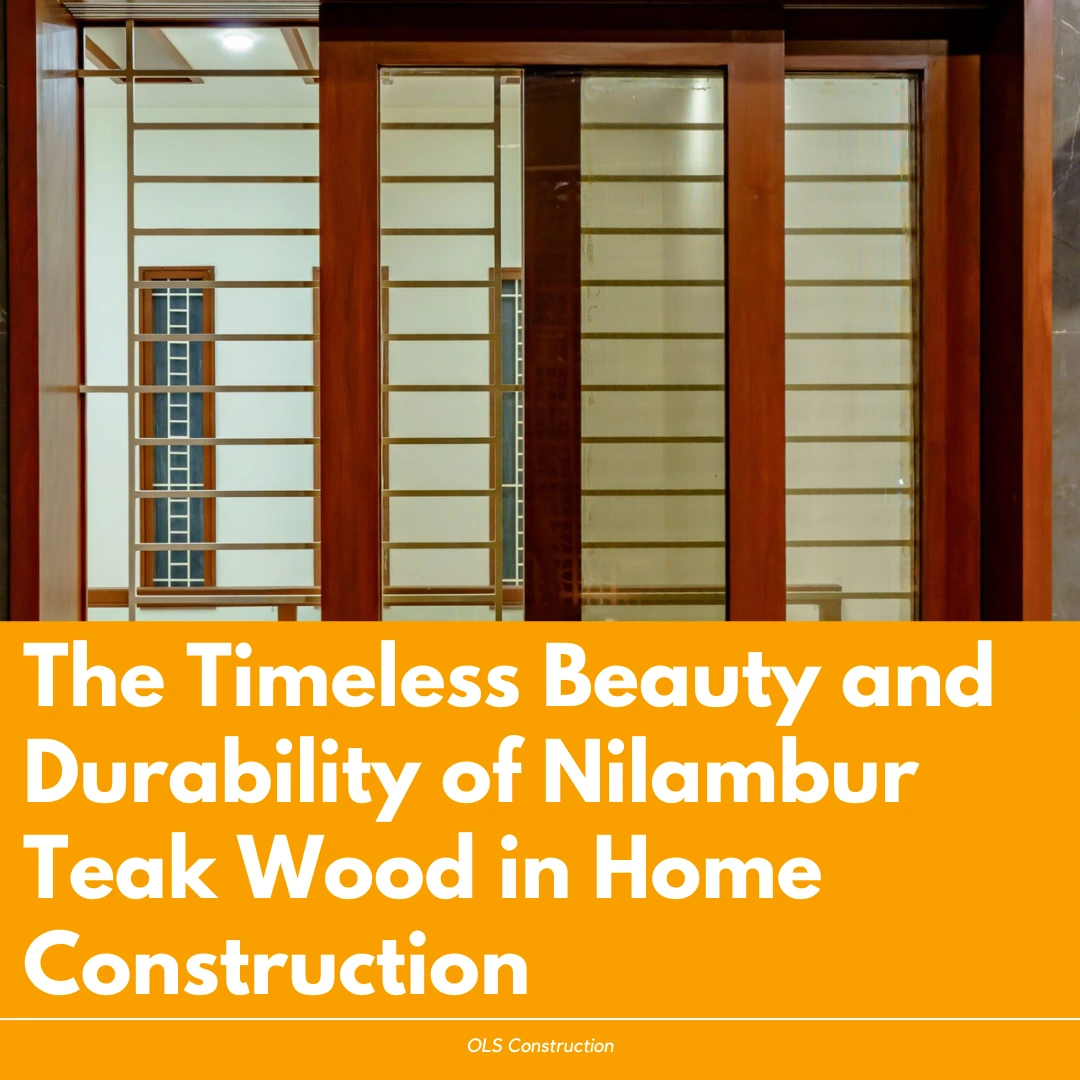River Sand vs M Sand

River sand and M sand (manufactured sand) are two popular sand types used in construction projects. The choice between these two can significantly impact the quality, durability, and cost of your construction project.
At OLS Construction, we understand the importance of selecting the right sand type, and we’re here to guide you through the pros and cons of each option.
Note: For all our house construction in chennai we prefer river sand.
What is River Sand?
River sand is naturally occurring sand collected from riverbeds. It forms over time through the weathering and erosion of rocks, carried by water currents.
Composition and Properties
River sand typically consists of fine, rounded particles with a smooth texture. It has a varied gradation, meaning it includes particles of different sizes, which helps in providing a dense mix.
The particle size and angularity of river sand make it ideal for certain construction applications.
Advantages
- Natural Material: River sand is a natural material, which makes it environmentally friendly and generally more affordable.
- Affordability: Being naturally available, river sand is often less expensive.
- Availability: It is widely available in many regions.
Disadvantages
- Impurities: River sand can contain impurities like silt and clay, which can affect the quality of construction.
- Limited Supply: The supply of river sand is limited due to environmental regulations and over-extraction.
- Environmental Concerns: Excessive mining of river sand leads to riverbed degradation and habitat destruction.
What is M Sand (Manufactured Sand)?

M sand, or manufactured sand, is produced by crushing hard granite rocks. This process creates sand particles that are angular and have a uniform size.
Composition and Properties
M sand consists of uniform, angular particles that provide high strength and better bonding in concrete mixes. The manufacturing process ensures that M sand is
free from impurities.
Advantages
- Consistent Quality: M sand has a consistent quality due to the controlled manufacturing process.
- Eco-friendly: It is an environmentally friendly alternative to river sand.
- High Strength: The angular shape of M sand particles enhances the strength of the concrete.
Disadvantages
- Higher Cost: M sand can be more expensive due to the manufacturing process.
- Limited Availability: It may not be readily available in all regions.
Comparison: River Sand vs. M Sand
Particle Shape and Gradation
When comparing river sand and M sand, the particle shape and gradation are essential factors to consider.
River sand particles are generally rounded due to the natural erosion process. These rounded particles result in better workability, meaning the sand can be easily mixed and applied in various construction activities.
On the other hand, M sand particles are angular because they are crushed mechanically from larger rocks. The angularity of M sand particles provides better
interlocking and bonding, which is crucial for high-strength concrete applications. Moreover, M sand has a uniform gradation, meaning all particles are of a similar
size, which contributes to its consistent quality and performance.
Strength and Durability
Water absorption is a critical factor in determining the workability and durability of concrete. M sand has lower water absorption rates compared to river sand.
This means that less water is needed to achieve the desired workability, leading to a more robust and durable concrete mix.
River sand, with its varied particle sizes and potential impurities, can absorb more water. This can lead to inconsistencies in the concrete mix and affect its overall
quality. However, the smooth and rounded particles of river
Water Absorption and Workability
Water absorption is a critical factor in determining the workability and durability of concrete.
M sand has lower water absorption rates compared to river sand. This means that less water is needed to achieve the desired workability, leading to a more robust and durable concrete mix.
River sand, with its varied particle sizes and potential impurities, can absorb more water.
This can lead to inconsistencies in the concrete mix and affect its overall quality.
However, the smooth and rounded particles of river sand do provide good workability, making it easier to handle during construction.
Cost and Availability
Cost and availability are practical considerations for any construction project.
River sand is generally more affordable than M sand, primarily because it is naturally occurring and does not require the extensive manufacturing process that M sand does.
However, the availability of river sand is becoming increasingly limited due to environmental regulations and over-extraction concerns. This scarcity can drive up costs and create supply chain challenges.
M sand, while more expensive due to the manufacturing process, offers consistent quality and is increasingly available as a sustainable alternative to river sand. As demand for eco-friendly construction materials grows, the availability of M sand is likely to improve.
Environmental Impact
The environmental impact of sand extraction is a significant concern.
River sand mining can cause severe environmental damage, including riverbed degradation, habitat destruction, and water pollution.
These environmental issues have led to stricter regulations on river sand extraction, further limiting its availability.
M sand, on the other hand, is produced from crushed rocks and does not deplete natural riverbeds. Its production is more sustainable and has a lower environmental impact compared to river sand mining.
By choosing M sand, construction projects can reduce their ecological footprint and contribute to environmental conservation efforts.
Applications and Ideal Uses
Concrete Construction
- River Sand: Suitable for general concrete use, especially where high workability is needed.
- M Sand: Preferred for high-strength concrete applications due to its superior bonding and strength properties.
Plastering and Rendering
M sand is often chosen for plastering and rendering due to its better bonding properties and consistent quality.
Masonry Work
- River Sand: Commonly used for general masonry work where the natural texture and workability of river sand are beneficial.
- M Sand: Suitable for structural masonry work, providing higher strength and durability.
Paving and Flooring
M sand offers improved wear resistance, making it ideal for paving and flooring applications where long-term durability is essential.
Cost Considerations and Availability
The cost of river sand and M sand varies by region due to factors such as transportation, extraction, and manufacturing processes. River sand is generally cheaper but can become more expensive in regions where it is scarce.
Availability and Supply Chain
River sand is becoming scarcer due to environmental restrictions, while M sand is more consistently available through manufacturing. Ensuring a reliable supply chain for sand is crucial for construction projects to avoid delays and cost overruns.
Cost-Benefit Analysis
For some projects, the higher initial cost of M sand is offset by its benefits in strength, durability, and sustainability.
A thorough cost-benefit analysis can help determine the most economical and effective choice for each specific project.
Environmental Impact and Sustainability
River sand mining can cause significant environmental damage, including habitat destruction, riverbed degradation, and water pollution. These concerns have led to increased regulations and a push for more sustainable alternatives.
M Sand as a Sustainable Alternative
M sand is produced from renewable sources and has a lower environmental impact. Its use helps conserve natural riverbeds and reduces the ecological footprint of construction projects.
Recycled and Alternative Sand Sources
Using recycled materials and alternative sand sources, such as crushed glass or reclaimed sand from demolished buildings, can further reduce environmental impact and promote sustainability.
Choosing the Right Sand for Your Project
Factors to Consider
- Project Requirements: Determine the specific needs of your project, such as strength, durability, and workability.
- Budget: Consider the cost implications of each sand type and perform a cost-benefit analysis.
- Availability: Check the local availability of sand to ensure a reliable supply chain.
- Environmental Concerns: Opt for sustainable options where possible to minimize environmental impact.
Consulting with Experts
OLS Construction offers expert advice to help you choose the right sand for your project. Our team can provide personalized recommendations based on your specific needs, ensuring the best results for your construction endeavors.
Importance of Industry Standards
Always follow industry standards and guidelines to ensure the quality and safety of your construction projects. Adhering to these standards helps avoid potential issues and ensures the longevity and durability of the construction.
Conclusion
Choosing the right sand is essential for the success of any construction project.
River sand and M sand each have their unique advantages and disadvantages. Making an informed choice can save costs, improve quality, and support sustainability.
For professional guidance, contact OLS Construction. We’re here to help you every step of the way.



